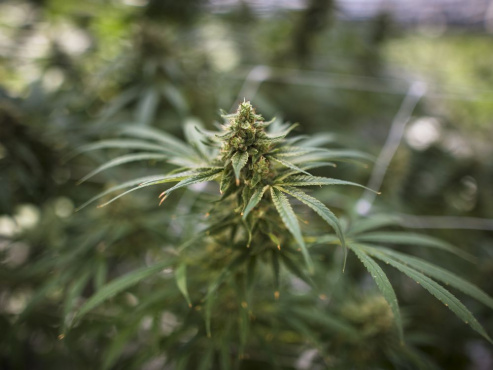Cannabis-related hospital visits in Calgary spike since legalization: physicians

Hospital visits related to cannabis use have increased by 25 per cent in Calgary since recreational use of the substance was legalized, say physicians.
A greater willingness to consume cannabis following the end of prohibition last October could be a reason for the jump in numbers, said Dr. Eddy Lang, a senior researcher with Alberta Health Services who specializes in emergency medicine.
“We’re seeing more hospitalizations due to cannabis and more emergency room visits,†said Lang.
“Now there’s less stigma around using it, more people are trying it and more are seeing side-effects.â€
Those side effects include cannabis hyperemesis syndrome, which is marked by severe, prolonged vomiting, a condition Lang called ironic due to the drug’s known ability to reduce nausea.
Others are psychiatric reactions to pot consumption, with the vast majority of patients in both categories being smokers rather than oral users, said Lang.
“A lot of the cannabis is high in THC and low in CBD, and a lot of people are still getting their cannabis illegally,†said Lang.
Cannabidiol, or CBD, is a compound found in cannabis that’s more related to medical use and not an intoxicant.
Â

A syringe loaded with a dose of CBD oil is shown in a research laboratory at Colorado State University in Fort Collins, Colo. David Zalubowski / THE ASSOCIATED PRESS
Cannabis retailers say higher-THC-level products consistently garner higher sales.
Lang said those overall numbers, though growing, aren’t large and the experience of U.S. states that legalized pot several years ago is for hospital admissions to recede as mainstream use stabilizes and experimentation runs its course.
He couldn’t provide exact numbers, but in fiscal year 2018, there were at least 645 such admissions at Alberta hospitals.
Those numbers had increased by a third since 2015.
The age ranges of those patients varied, though about a fifth of those were under the age of 18.
Another trend Calgary hospitals have seen since last fall is a dramatic drop in the number of opioid overdose admissions, he said.
“A year ago, every ER was seeing five or six overdoses a day, now it’s down to one or two a week,†said Lang.
It’s possible a heavier use of cannabis has contributed to that drop, something that’s been seen in some U.S. states, he said.

Cannabis plants grow in a vegetation room at the Sundial Growers cannabis production facility in Olds on Wednesday March 27, 2019. Gavin Young/Postmedia
Safer opioid consumption sites, such as the one provided at the Sheldon M. Chumir Health Centre, might also be a factor, as could the growing popularity of crystal meth that’s been seen by some as displacing opioids.
Figures for opioid deaths remain high in Alberta, though health-care experts say those numbers seem to be levelling out in recent months.
That more people are showing up at hospitals due to cannabis side-effects isn’t surprising, said Dr. Rebecca Haines-Saah.
“This usually presents in chronic, habitual users who are already vulnerable and then their use intensifies,†said Haines-Saah, an associate professor of community health sciences with the University of Calgary’s Cummings School of Medicine. “Physicians are also watching out for it more.â€
While she said it’s not good to hear of more people being harmed by cannabis use, there could be a silver lining in those numbers.
“I’m actually glad people are showing up at emergency departments, where people would once feel stigma, they feel more comfortable,†said Haines-Saah.
She agreed with Lang that the phenomenon could be transient and emphasized its consequences still pale compared with those involving alcohol.
“We’ll see if it remains a niche substance that won’t have the same impact as alcohol,†said Haines-Saah.
Sixty-seven per cent of those who use tobacco become dependent on it, she said, while that figure is 22 to 24 per cent of alcohol users.
That compares to 13 per cent of cannabis consumers, added Haines-Saah.
“Even so, for those people, it’s not insignificant,†she said.
Lang said he’s concerned about how the legalization of cannabis edibles and other extracts — which could happen later this year — might exacerbate that problem.
Haines-Saah said she hopes federal guidelines on labelling and tight restrictions on THC content per edible will lessen that risk.
And she noted edibles have long been readily available on the black market.
“It’s been a total free-for-all so far, so I’m looking forward to it being regulated,†she said.
On Wednesday, it was announced Ottawa would provide about $500,000to fund three cannabis research and awareness projects at the University of Calgary, including a study on hyperemesis.
on Twitter: @BillKaufmann